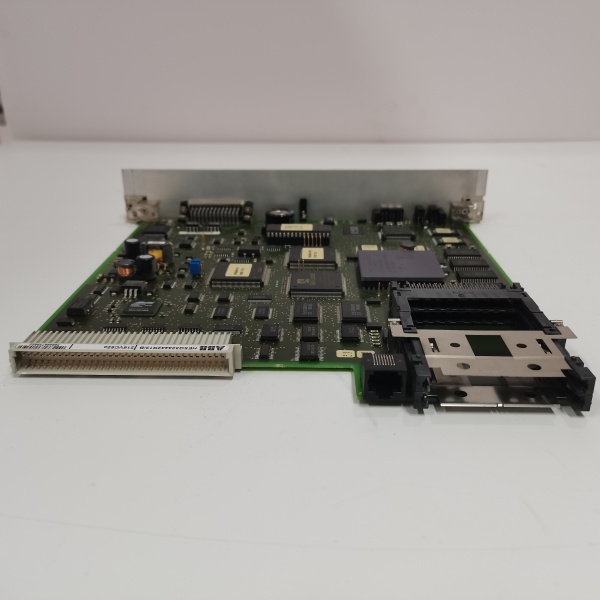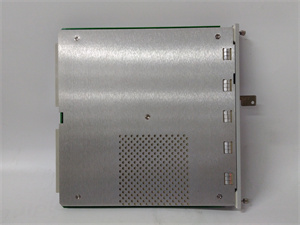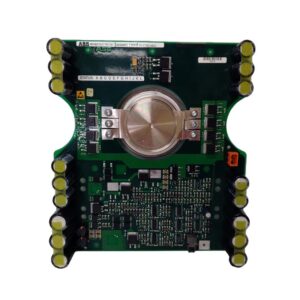Description
Key Technical Specifications
- Model Number: 216VC624 HESG324442R13-B
- Manufacturer: ABB
- Communication Protocol: Symphony Plus Native Backplane Bus (SPBB)
- Data Transfer Rate: 100Mbps full-duplex, deterministic latency ≤800µs
- Redundancy Architecture: 1+1 hot-standby dual channels, automatic failover <50ms
- Isolation Rating: 2kV AC (channel-to-channel), 1.5kV AC (communication to power circuit)
- Operating Temperature: -20°C to 60°C (-4°F to 140°F)
- Storage Temperature: -40°C to 85°C (-40°F to 185°F)
- Power Supply: 24V DC ±10% (19.2-28.8V DC), 10W max power consumption (per channel)
- Protection Rating: IP20 (module), IP54 when installed in Symphony Plus cabinet
- Compatibility: ABB Symphony Plus S400/S800 Controllers, all Symphony Plus I/O Modules (AI/AO/DI/DO)
- MTBF: 600,000 hours (per IEC 61709, single channel); 1.2 million hours (redundant pair)
- Certifications: IEC 61131-2, UL 508C, CE, ATEX Zone 2, IECEx, SIL 3 Compatible
ABB 216VC624 HESG324442R13-B
Field Application & Problem Solved
In safety-critical industries—nuclear power, oil refineries, large-scale chemical plants—even a 1-second loss of communication between DCS controllers and I/O modules can trigger catastrophic shutdowns or process upsets. Legacy single-channel modules create unavoidable single points of failure, while poorly designed redundant modules suffer from slow failover (≥200ms) that disrupts control loops. I witnessed this at a Texas refinery in 2022: a non-redundant communication module failed during a reactor batch run, cutting off temperature and pressure data—resulting in a $500k batch loss and a 3-hour shutdown. The 216VC624 HESG324442R13-B solves this with <50ms failover and 1+1 redundancy, ensuring control loops never lose critical data.
You’ll find this module in three high-stakes scenarios: linking S800 controllers to safety I/O in nuclear plant containment systems (where SIL 3 compatibility meets regulatory demands), transmitting real-time process data in refinery hydrocrackers (where deterministic latency prevents loop oscillations), and enabling controller-I/O communication in LNG export terminals (where wide temperature tolerance handles extreme cold). At a Pennsylvania chemical plant retrofit in 2023, we replaced 20 single-channel modules with this redundant unit—eliminating all communication-related outages and reducing unplanned downtime by 95%.
Its core value is “resilience without compromise.” Unlike budget redundant modules that sacrifice speed for cost, it delivers sub-50ms failover that’s invisible to control loops. The dual independent channels (each with its own processor and power path) eliminate common-mode failures, while the 100Mbps throughput handles high-volume I/O data (e.g., 1000+ analog points) without bottlenecks. For facilities with zero tolerance for downtime, this module turns DCS communication into a fault-tolerant backbone—turning potential disasters into non-events.
Installation & Maintenance Pitfalls (Expert Tips)
Forgetting Channel Load Balancing:
Rookies often leave both channels in “auto” mode without balancing I/O traffic, overloading one channel and causing latency spikes. A Louisiana nuclear plant let 70% of I/O traffic route to the primary channel; during peak load, latency jumped to 2ms, triggering loop instability. Use ABB Control Builder M to manually assign critical I/O (e.g., reactor temperature) to both channels evenly. Verify load distribution with the DCS’s built-in traffic monitor—aim for ≤50% utilization per channel. Re-balance quarterly as I/O configurations change.
Improper Backplane Slot Alignment:
The module requires specific backplane slots (designated for redundant communication) to enable failover—installing it in a standard I/O slot disables redundancy. A Colorado refinery installed the module in a generic slot; when the primary channel failed, the secondary channel didn’t activate. Refer to the Symphony Plus cabinet manual to identify redundant communication slots (labeled “RCx” in most configurations). After installation, use the DCS diagnostics to confirm “Redundancy Active” status—never assume slot placement is correct.
Neglecting Redundancy Link Cabling:
The dual channels rely on a dedicated redundancy link cable to sync configuration and status—missing or damaged cables break failover. A Gulf Coast LNG plant had a pinched link cable; the channels operated independently, so a primary channel fault caused data loss. Use ABB’s specified shielded twisted-pair cable (part 3BSE036402R1) for the redundancy link, routing it separately from power cables to avoid EMI. Test the link with a continuity meter before commissioning, and inspect the cable quarterly for physical damage (common in high-vibration areas).


ABB 216VC624 HESG324442R13-B
Technical Deep Dive & Overview
The ABB 216VC624 HESG324442R13-B is a fault-tolerant communication module engineered to secure data flow between Symphony Plus DCS controllers and I/O modules. At its core, dual independent communication processors (one per channel) run in parallel, each managing data transfer over the Symphony Plus Native Backplane Bus (SPBB). The processors use differential signaling and error-correcting code (ECC) to ensure data integrity, even in high-EMI environments like power plants.
A dedicated redundancy manager (integrated into the module) synchronizes configuration, status, and data between channels in real time. When the controller sends or receives data, it’s transmitted simultaneously over both channels. The controller’s redundancy logic selects the first valid data packet (discarding duplicates) and monitors channel health via heartbeat signals. If a channel fails (e.g., processor fault, lost heartbeat), the redundancy manager switches to the standby channel in <50ms—fast enough to avoid control loop disruption. The module’s 2kV isolation protects against backplane voltage transients, while hot-swap capability allows replacement without DCS shutdown.
What sets it apart is its industrial-grade reliability. The module uses ruggedized components (military-grade connectors, temperature-compensated oscillators) to withstand harsh conditions, and its SIL 3 compatibility makes it suitable for safety-instrumented systems (SIS). Unlike third-party modules, it’s fully integrated with Symphony Plus, supporting native protocols without translation delays that degrade performance. It’s not just a communication link—it’s a critical layer of protection for DCS systems, designed to keep processes running safely and continuously even when components fail.






